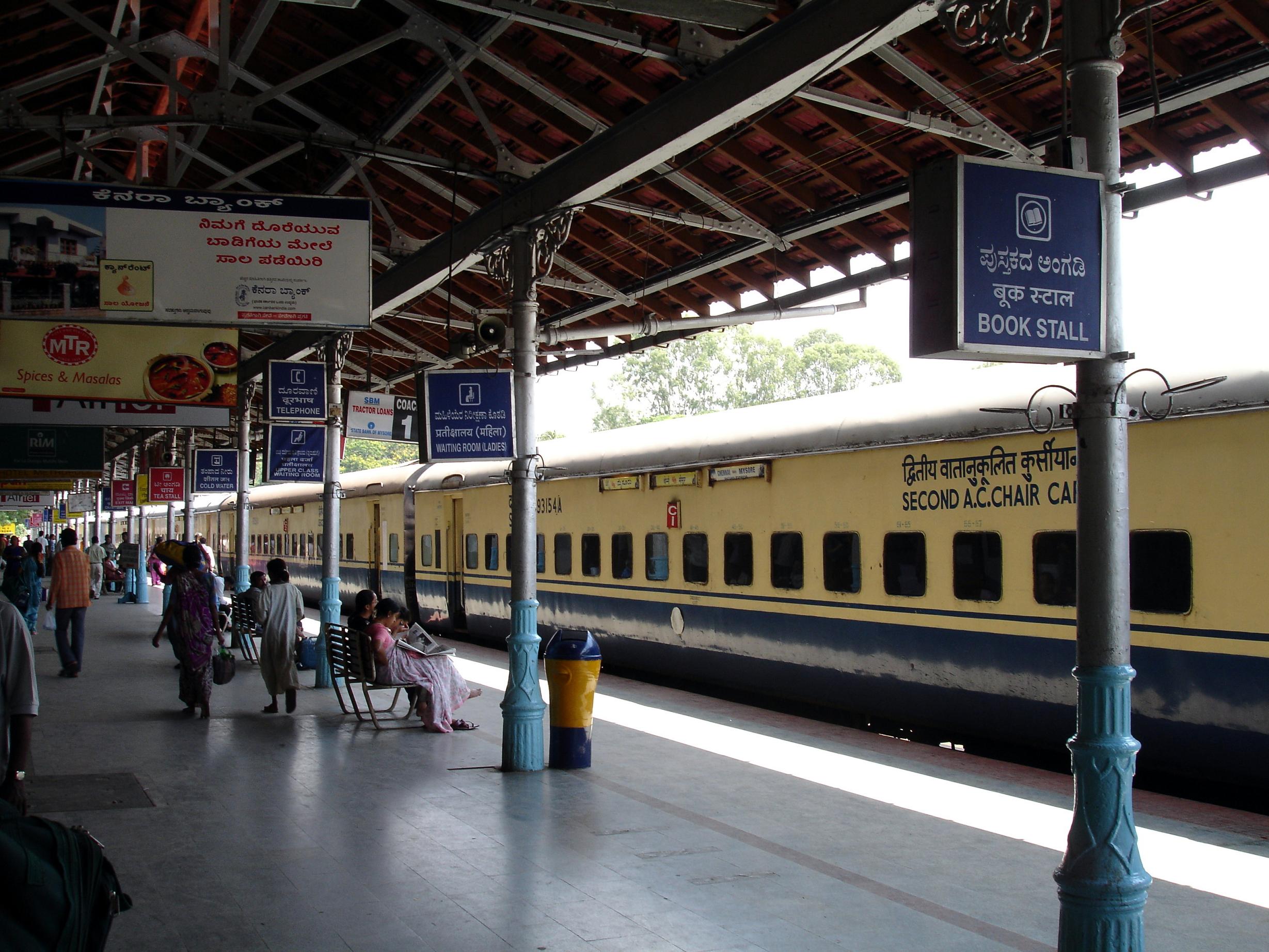
I love taking the train in India. Today many tourists and business travellers prefer to fly, thanks to the low fares offered by India’s numerous budget airlines. Flying is definitely quicker and more convenient – but nothing beats the charm and adventure of a long-distance railway journey.
Last Sunday morning at Bhubaneswar station I boarded the Yesvantpur super fast express to Bangalore. At 7am the station was a whirlwind of activity. Porters in red shirts were balancing the luggage of bleary-eyed arriving passengers on their heads, while departing passengers crowded around the information boards trying to locate their coach and berth numbers.
The platform was crowded with people – most of them there to see off their family members and friends. I soon located my coach and berth number and stowed my luggage under the seats. I was glad to see that the other people sharing my compartment were all women. Opposite me an older lady in an Orissa-style sari with a very bad cough was tended to by her daughter. She told me she was going back to her job in Bangalore after some time off at home in Orissa, and she was taking her mother with her. A student studying in Bhubaneswar was going home to Tamil Nadu. Another young woman travelling alone told me she worked at a call-centre in Bangalore. The woman sitting at the window seat was being seen off by her entire extended family – or so it seemed: a small crowd swarmed around the window offering her gifts of bananas and sweets for the journey. The compartment was already full when another woman showed up waving her ticket and claiming berth #2 as hers. Was there a mix-up? The woman travelling with her mother revealed that she was on the waiting list but that her mother had a confirmed reservation. She didn’t seem to be worried about this. She gave up her seat to the newcomer and squeezed in with the rest of us on the seat opposite.
At 7:30 sharp the train gave a jerk and started to move along the platform in slow motion. There was a flurry of waves and shouts from the platform. I surveyed the crowd as the train pulled out of the station and saw quite a few women holding up handkerchiefs to their eyes, sad to see their loved ones go so far away.
Our 1552 kilometre journey had just started. 26.5 hours later we would arrive in Bangalore, after crossing through the states of Orissa, Andhra Pradesh, Tamil Nadu and Karnataka.
Two conductors smartly dressed in khakis and navy blue blazers asked for our tickets. The woman without a confirmed reservation asked if she had a seat available and after a rummage through a huge pile of print-outs, she was assigned a berth in coach 11. This was far away from her ailing mother travelling with us in coach 2, so a young man generously offered his berth, and collecting his luggage, headed over to coach 11.
Vendors in crisp Indian Railways uniforms filed through the aisles selling tea, idly and upma for breakfast. It’s difficult to go hungry on the train in India! Soon after, ‘unofficial’ vendors in more tattier clothes appeared, offering cashew nuts, coconuts, bananas, snacks, toys and games, newspapers and magazines. These were followed by a procession of beggars: a lame man shuffling through the aisle on his hands, an old woman missing fingers, children dressed in tatters with beseeching eyes, a blind man with a beautiful singing voice, hijras (transsexuals) loudly clapping their hands and demanding money, a man with wild hair aggressively waving a metal tray in passengers’ faces and yelling “Jai Jagannath!”.
Outside, scenes of rural India flew past the window: women in brightly-coloured saris working in rice paddies, farmers tending their fields, water buffalo bathing in ponds, a schoolboy in uniform riding to school on his bicycle, a woman walking down a red dirt path balancing a pot of water on her head.
The next morning I woke up to the sounds of vendors yelling “Coffee, coffee, coffee!” and I knew I was back in the South. The student from Tamil Nadu was gone: she must have got off in the early morning. A few hours later I was back in Bangalore, only half an hour behind schedule. The Yesvantpur ‘super fast express’ had lived up to its name.
(Photo courtesy of Wikimedia Commons.)

































